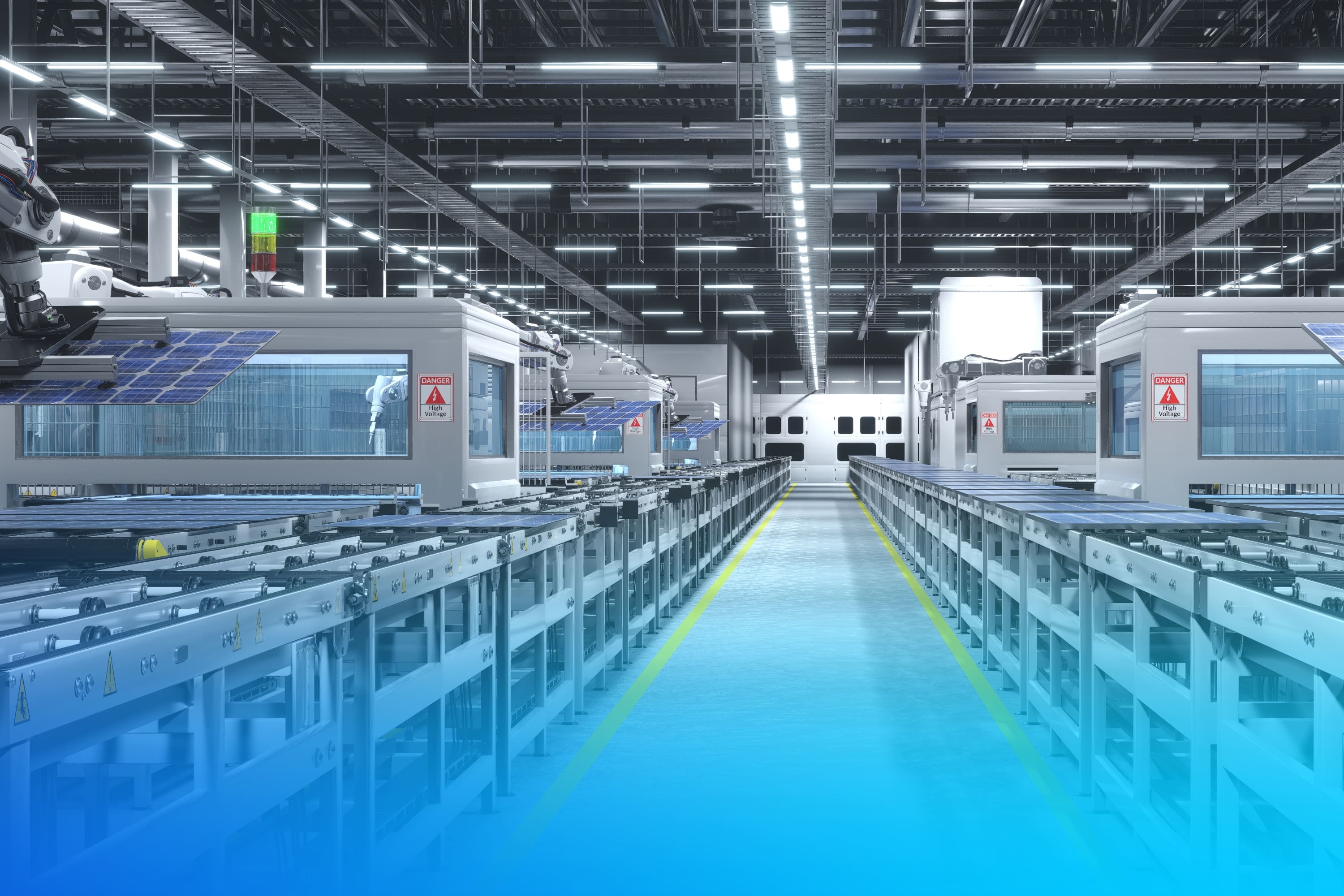How Industry Leaders Are Solving The Top Challenges In Sustainable Manufacturing
At Summerfest Tech 2025, five industry leaders tackled one of the most urgent challenges in manufacturing: how to scale sustainably without sacrificing performance. The takeaway was clear: AI and data are driving sustainability efforts in today's climate. From predictive maintenance to multimodal AI and digital twins, this panel showed how manufacturers are using smarter tools to cut emissions, reduce waste, and grow stronger. Here's what you need to know.

How Industry Leaders Are Solving The Top Challenges In Sustainable Manufacturing
At Summerfest Tech 2025, five industry leaders tackled one of the most urgent challenges in manufacturing: how to scale sustainably without sacrificing performance. The takeaway was clear: AI and data are driving sustainability efforts in today's climate. From predictive maintenance to multimodal AI and digital twins, this panel showed how manufacturers are using smarter tools to cut emissions, reduce waste, and grow stronger. Here's what you need to know.


The Summerfest Tech 2025 conference in Milwaukee, a place quickly gaining recognition as a quietly thriving tech hub, featured a panel session where five industry leaders came together to tackle a topic at the intersection of innovation, regulation, and responsibility.
The topic: How artificial intelligence (AI), predictive analytics, and computing power are reshaping energy and sustainability in manufacturing.

Moderated by Atalia Horenstein, Head of AI Practice at Customertimes, the panel featured:
- Charlie Scott, CRO at Golgix
- Franco Patano, Principal Solution Architect at Databricks
- David Monsky, VP, Digital Transformation and Enterprise Strategy at Clarios
- Christina Sivulka, Global Sustainability Senior Manager at EnerSys
Each panellist brought a distinct perspective, from software, industrial manufacturing, energy storage, and data infrastructure. Here’s a breakdown of the most compelling insights from the conversation.
Sustainability Is Becoming A Strategic Imperative
Christina Sivulka kicked off by emphasizing that sustainability isn’t just about environmentalism or good PR. It’s now a central business mandate. At EnerSys, sustainability impacts both product development and operational efficiency and is closely tied to brand identity. By reducing emissions by 25% since 2019, EnerSys has proven that environmental goals can support corporate performance.
David Monsky of Clarios echoed that sentiment, explaining how the company’s 99% battery recycling rate exemplifies a closed-loop circular economy. “We produce 150 million batteries annually,” he noted. “That’s two batteries recycled every second in a Clarios facility.”
After the fruitful discussion, both panellists agreed that sustainability in manufacturing now extends well beyond compliance. Now, it’s a business opportunity that can unlock operational savings, capital access, and competitive advantage.
2. AI Is a Double-Edged Sword, But A Net-Positive for Sustainability
The rise of AI brings a paradox: while it demands energy-hungry data centers, it also offers solutions to minimize emissions and waste.
Franco Patano from Databricks highlighted two primary sustainability use cases for AI:
- Predictive Maintenance: Reduces unplanned downtime and the high cost of emergency services.
- Digital Twins: Simulations of physical systems (like engines) allow manufacturers to design for efficiency before production ever begins.
He cited Shell as an example, using predictive analytics to optimize maintenance scheduling across global supply chains. A strategy that not only saves emissions but also significant capital, and one that could be applied to various industries.
Christina added that at EnerSys, AI now flags anomalies in energy usage, helping facilities detect issues early and redirect resources.
As this topic wrapped up, in conclusion, the consensus among the speakers was that while AI can strain resources, it can also radically improve how efficiently we use them, especially if applied intentionally.
3. Don’t Over-Index on the Model, First Get Your Data House in Order
One of the strongest takeaways came from Franco, who warned against the tendency to rush toward big-name models or solutions without foundational data hygiene. “You need to know what your data means, where it came from, and who owns it,” he said.
Echoing this, Christina described how EnerSys worked with ESG Flow (now StraySara) to use AI for parsing PDF utility bills across 180 sites. Together, they transform unstructured data into emissions insights; with clean, centralized, and structured data, they’re now able to tailor sustainability strategies for individual facilities.
Franco and David both stressed that companies should focus less on cutting-edge AI models and more on clear problem statements, sound data infrastructure, and outcome-based experimentation.
4. Speed to Value Matters More Than Perfection
Charlie Scott shared GoGeek’s approach: don’t introduce more data, rather maximize the value of the data you already have. “We work with manufacturers to tap into their existing control systems,” he explained, “and deliver clarity, foresight, and guidance.”
The secret isn’t gathering more information but acting on what's already there. “If I can help you get more output from the same input,” he said, “that’s sustainability and profitability.”
David reinforced this point, advocating for MVPs and rapid iteration. “You don’t need the best model,” he said. “You need a model that works well enough and costs less.”
5. Emerging Trends: Multi-Modal AI, Virtual Power Plants, and Efficiency-Driven Design
The panel also explored the frontier of AI in energy and manufacturing.
The most notable key trends included:
- Multimodal AI: Tools that integrate text, image, sensor, and audio data for real-time, context-aware decision-making.
- Smaller, Task-Specific Models: Models fine-tuned to company-specific data sets, reducing computational costs while improving relevance.
- Virtual Power Plants (VPPs): Distributed energy systems that can flexibly balance grid demand using AI-based forecasting.
- Supercapacitors: New battery chemistries and short-burst energy storage technologies that optimize power usage in high-demand contexts.
David shared Clarios billion-dollar investment in U.S.-based recycling centers and supercapacitor R&D as part of their commitment to innovation.
6. Practical Advice: Focus on Problems, Not Tools
The panel’s closing advice was clear and practical:
It’s best to start small and focus on a specific business problem. For instance, “AI is a tool, not a goal”, like Charlie reminded the audience.
Remember the art of partnerships and alliances. Mid-market manufacturers don’t need to build everything in-house; they can expedite work through smart strategic partnerships.
Design with sustainability in mind from the start. When sustainability is ingrained in your business model, then the entire product lifecycle reflects that.
Embrace AI as a learning tool and leverage its capabilities to expand your reach and take advantage of the plethora of generative tools at your fingertips.
Conclusion: AI and Sustainability Go Hand in Hand
AI is a lever, a start button, but pulling that lever effectively requires intentional design, ethical leadership, and strong data discipline. The SummerFest Tech 2025 panel session discussions ranged from battery manufacturers to data architects, but the message was clear: sustainability and business growth can coexist, and more importantly, they must.
As Christina so eloquently summed it up at the end: “If you don’t have the data, it’s hard to manage. But once you do, you can start making the right decisions.”
Milwaukee may be an underrated tech hub, but the ideas shared at this session were anything but small. The speakers shone a spotlight on the future of AI and sustainable manufacturing, making it clear that it’s happening now. And for those ready to lead, the path is becoming clearer every day.

Discover more about the impact of using the latest tech in your business






